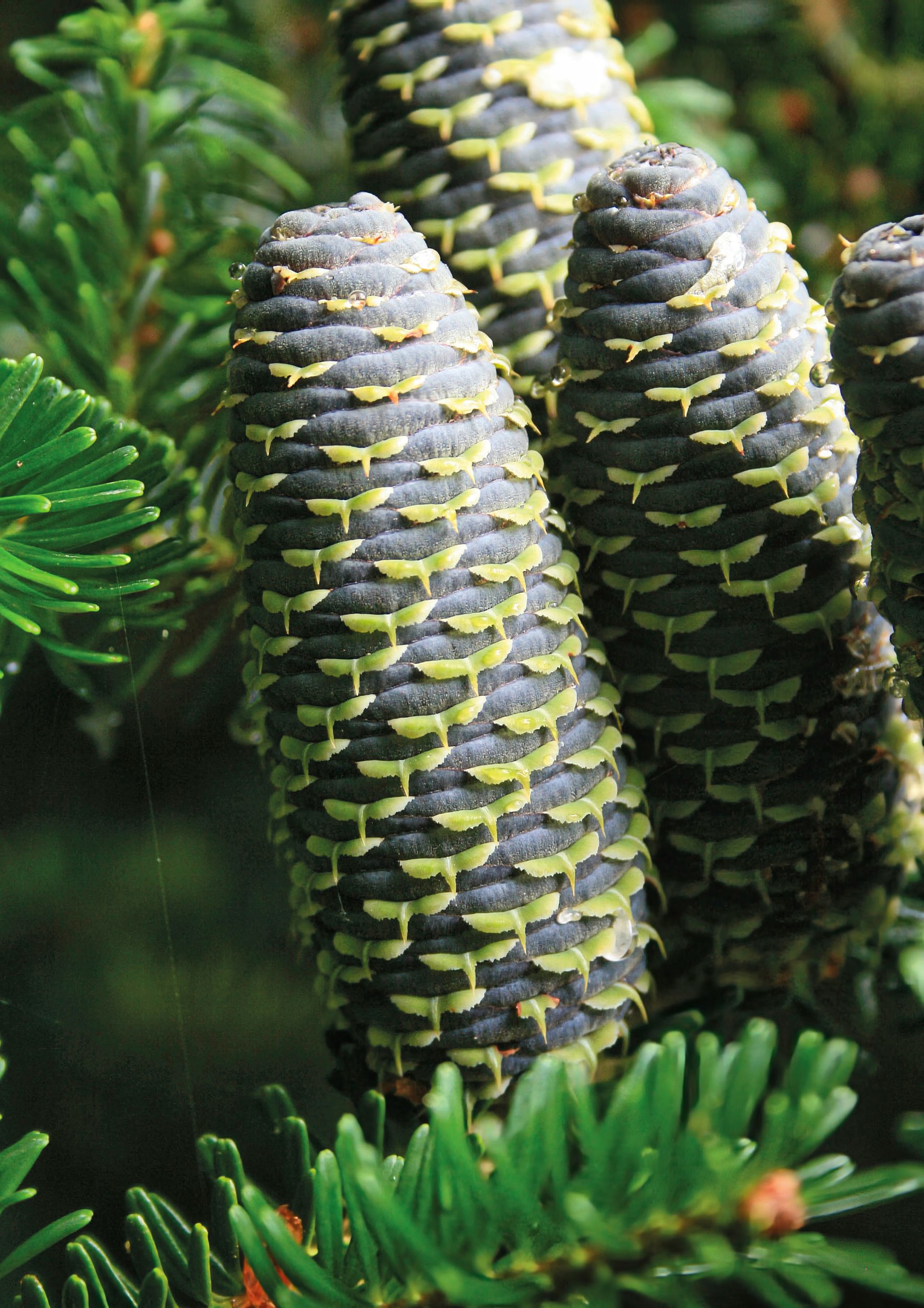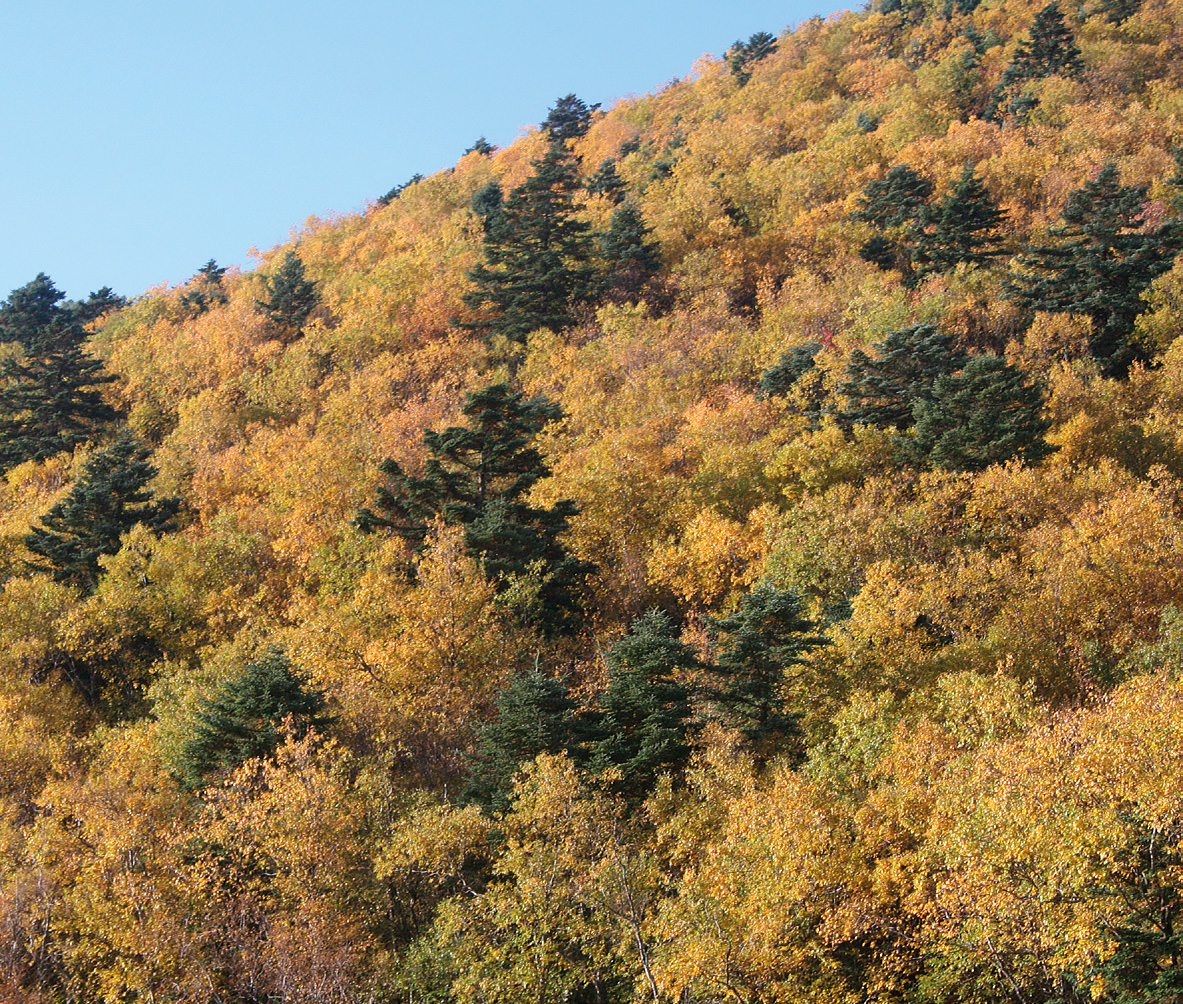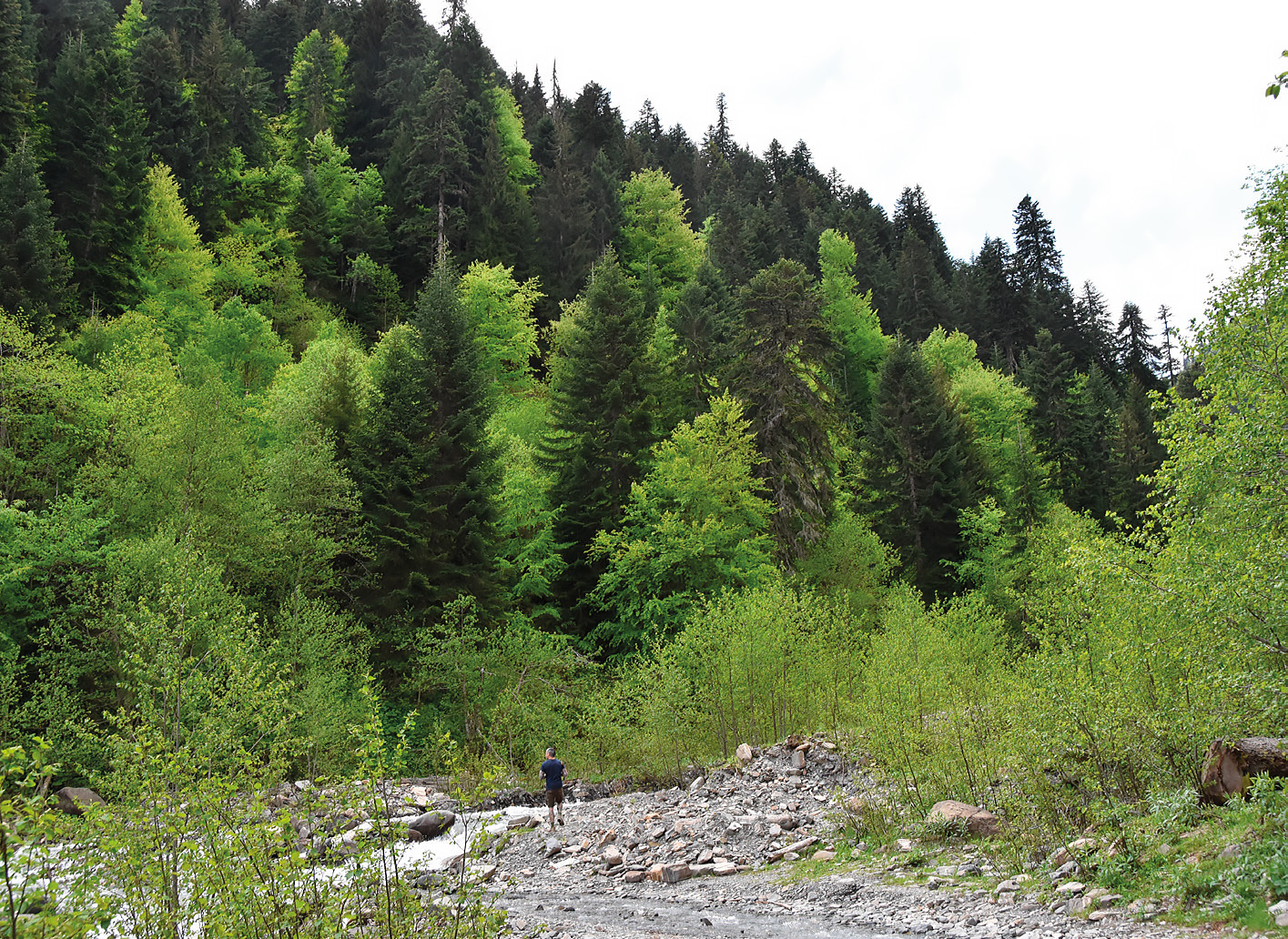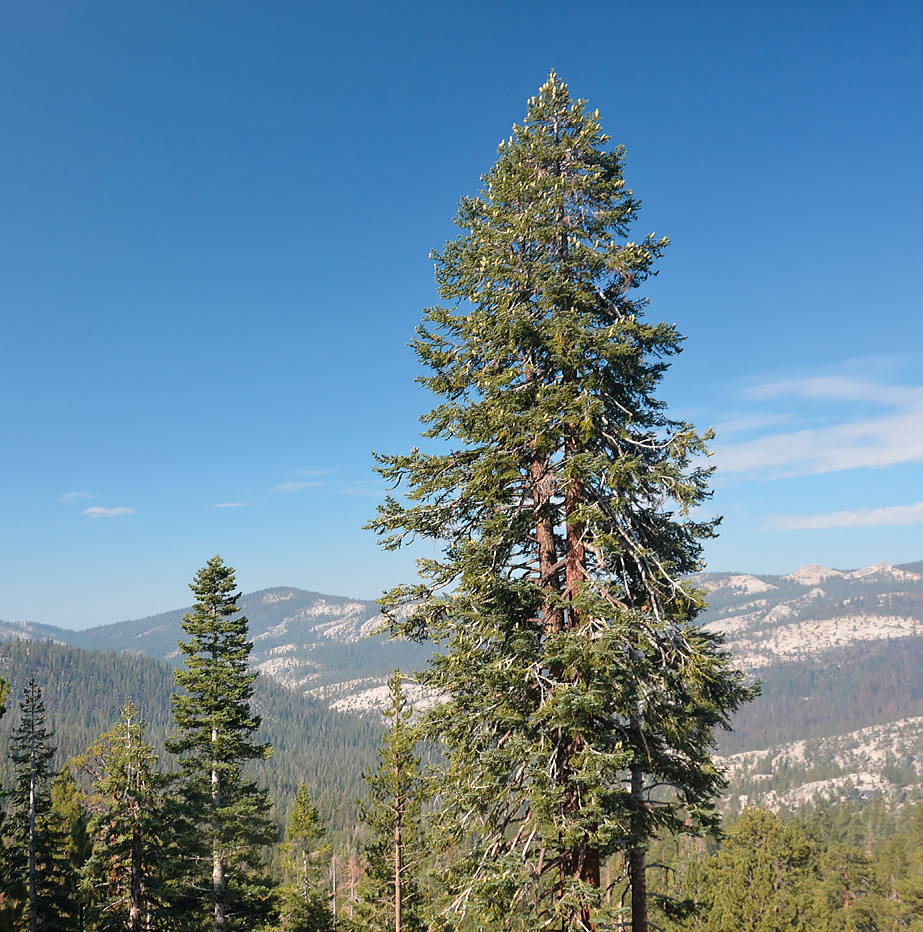A plant group that deserves to be appreciated as park trees
Henrik Sjöman and Andrew Hirons

The beautiful and highly detailed cones of Abies koreana.
One genus of conifers still waiting to become popular is the fir trees. Amongst these stately evergreens you can find many beautiful and useful ornamental trees, even for cold climates. In this and our next Plantsman’s Choice article we will be taking a look at the genus Abies and presenting a number of species worthy of cultivation.
The fir tree genus includes around 40–50 species, depending on which taxonomic publication you choose to follow. There are many fir species that we in Europe have very good experience with in terms of their hardiness and development. There is much to be gained in terms of knowledge and experience from the available literature, especially concerning European and North American species which have been in cultivation for a long time. However, the literature on Asian fir species is scant, especially those from China, and few have extensive experience of them in cultivation.
Firs have their main distribution in the northern hemisphere, in cool climates. At more southern latitudes, they are concentrated in high mountain systems where it is also possible to find coolness and moisture. In their natural habitats, most firs are more or less late-successional species.*
As young plants, they require sheltered conditions with a good and even supply of soil moisture and humidity. Young firs also find it difficult to handle large temperature changes when sunny and warm days are followed by cold nights and therefore require protection during establishment. They are also sensitive to competition from weeds and excessively dense ground vegetation. For this reason, firs like to establish within other woody vegetation.
Nurtured amongst the pioneer forest system that typically consists of birches, alders or larches, they can grow in an environment where they are protected from large temperature changes and wide fluctuations in soil and air humidity. In these shady environments, weed competition is not too much of a problem either, as the ground vegetation does not become highly competitive. Most firs have great tolerance for shady conditions, so they can develop well below other vegetation which, over time, they grow through and then over-top.
There are also situations where firs can successfully establish naturally without this protective pioneer canopy, but these tend to be in high terrain – in mountain ranges or in very northern latitudes characterised by cool and humid climates. However, even in these environments open and sunny conditions can give many firs major problems with competition from grass and other vegetation. Even in cultivation, grass competition is a problem: dense grass and open areas can significantly complicate establishment. If you buy larger specimens to bypass the sensitive youth of the genus, you will still need to be diligent about the planting environment to provide high exposure during the establishment phase.

Abies fargesii in central China growing through the canopy of birches (Betula utilis) that have created suitable growing conditions for the firs to establish and develop well.

Abies nordmanniana from the Caucasus uses birches and alders for a successful establishment and development.

A solitary Abies procera in the Sierra Nevada, western USA.
In cases where you still want to use a fir as a stately solitary tree or a group of trees in an open environment, you can establish them with the help of a protective screen of nurse trees. These do not have to consist of a traditional nurse plantation of common larch, alders or birches. Instead, you can use more exciting species such as Erman’s birch (Betula ermanii): with its whitish-pink trunks it gives the planting a beautiful form. As the firs slowly develop in the shelter of the birches they form a strongly contrasting background to the birch trunks. The planting can then be gradually thinned out until it finally consists only of firs, which will give a location a unique character for a long time.
There is, of course, variation in how sensitive fir species are to open and exposed environments. The two west American species – white fir (Abies concolor) and noble fir (Abies procera) – may be considered less late-successional, which means that they are not as dependent on a protective screen of other vegetation for as long as many other species within the genus. After only a few years, they can handle more exposed environments and have a slightly faster development as young trees.
In addition to the fact that most firs are extremely beautiful and well-shaped solitary trees, they also function in a large park as a background for other plants. The dark-green foliage highlights the colours of other plants that offer beautiful flowers or striking autumn colour. As the firs are evergreen, they also provide a clear volume and structure all year round, which is important in park environments that are usually dominated by deciduous trees which look less vibrant in winter.
Dr Henrik Sjöman is a Lecturer at the Swedish University of Agriculture Sciences and a Scientific Curator at Gothenburg Botanic Garden.
Dr Andrew Hirons is a Senior Lecturer in Arboriculture and Urban Forestry at University Centre Myerscough.
This article was taken from Issue 200 Spring 2023 of the ARB Magazine, which is available to view free to members by simply logging in to the website and viewing your profile area.